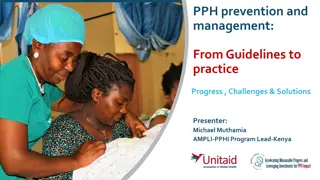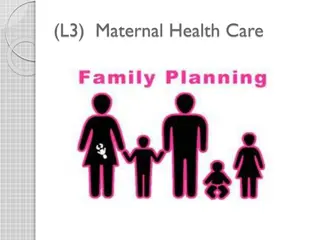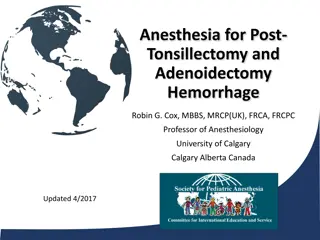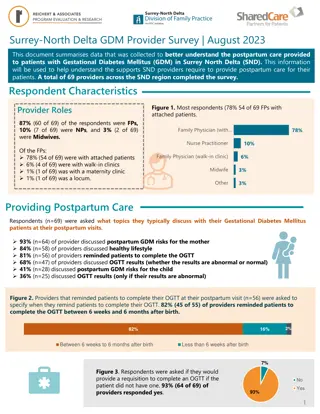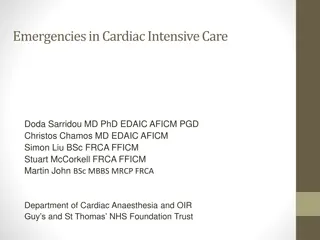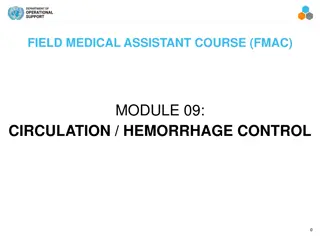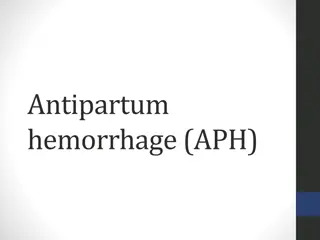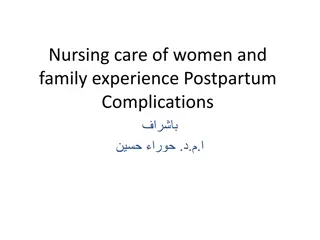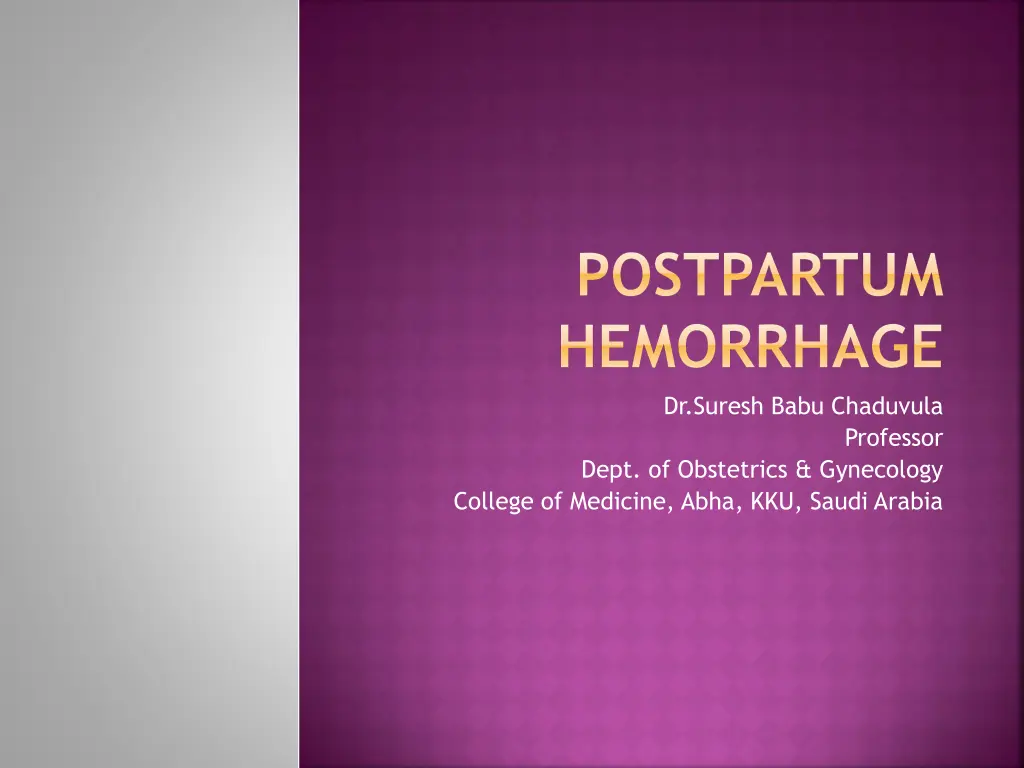
Understanding Postpartum Hemorrhage: Causes and Types
Learn about postpartum hemorrhage, a serious complication after childbirth, including its definition, types (primary and secondary), causes, and contributing factors such as atonic PPH and traumatic PPH. Explore the factors leading to PPH, its incidence, and potential complications to be aware of in the postpartum period.
Download Presentation

Please find below an Image/Link to download the presentation.
The content on the website is provided AS IS for your information and personal use only. It may not be sold, licensed, or shared on other websites without obtaining consent from the author. If you encounter any issues during the download, it is possible that the publisher has removed the file from their server.
You are allowed to download the files provided on this website for personal or commercial use, subject to the condition that they are used lawfully. All files are the property of their respective owners.
The content on the website is provided AS IS for your information and personal use only. It may not be sold, licensed, or shared on other websites without obtaining consent from the author.
E N D
Presentation Transcript
POSTPARTUM HEMORRHAGE Dr.Suresh Babu Chaduvula Professor Dept. of Obstetrics & Gynecology College of Medicine, Abha, KKU, Saudi Arabia
POSTPARTUM HEMORRHAGE [ PPH ] Definition: More than 500 ml of blood loss following normal vaginal delivery of the fetus or 1000ml following Cesarean section. Clinically the amount of blood loss from or into the genital tract which will adversely affect the general condition of the patient Hemorrhage leading to fall in hematocrit by 10 %. Incidence 1 %
TYPES 1] Primary 2] Secondary Primary bleeding occurs following delivery of the baby up to 24 hours Primary is two types: A] Third Stage hemorrhage B] True Post Partum hemorrhage
Third Stage hemorrhage: Bleeding occurs before the expulsion of placenta Example- Placenta accreta, retained placenta True Postpartum hemorrhage: Occurs after the expulsion of placenta
Secondary or Delayed or Late Postpartum hemorrhage: Bleeding occurs following delivery of the baby after 24 hours up to 6 weeks.
PRIMARY POSTPARTUM HEMORRHAGE Causes: 1] Atonic 2] Traumaic 3] Mixed 4] Coagulopathy
ATONIC PPH Contributes for 80 % of PPH Commonest cause of PPH Cause Faulty retraction of the uterus Etiology: 1] Grand Multipara 2] Over- distension of uterus Multiple pregnancy, Hydramnios, big baby 3] Anemia
4] Prolonged Labor 5] Anaesthesia Halothane. Ether, Cyclopropane 6] Uterine fibroid 7] Precipitate labor 8] Malformations of uterus septate uterus, bicornuate uterus 9] Ante partum hemorrhage 10] Initiation & augmentation of delivery with oxytocin
TRAUMATIC PPH 1] Cervix lacerations 2] Vaginal laceration 3] Perineum injury 4] Paraurethral injury 5] Uterine rupture
Combination of Atonic and Traumatic: Blood coagulation Disorders: Abruptio Placenta, Jaundice, Thrombocytopenic purpura, HELLP syndrome
THE FOUR T TO REMEMBER Tone Tissue Trauma Thrombin
DIAGNOSIS Vaginal bleeding may be revealed or concealed Alteration in pulse, Blood pressure and Pulse pressure Flabby uterus in atonic uterus
PREVENTION OF PPH UTEROTONIC DRUGS Routine oxytocic administration in the third stage of labour can reduce the risk of PPH by more than 40% The routine prophylaxis with oxytocics results in a reduced need to use these drugs therapeutically Management of the third stage of labour should therefore include the administration of oxytocin after the delivery of the anterior shoulder.
MANAGEMENT OF PPH Early recognition of PPH is a very important factor in management. An established plan of action for the management of PPH is of great value when the preventive measures have failed.
THE B-LYNCH SUTURING Description of technique
SUMMARY: REMEMBER 4 TS Tone Tissue Trauma Thrombin
SUMMARY: REMEMBER 4 TS TONE Rule out Uterine Atony Palpate fundus. Massage uterus. Oxytocin Methergine
SUMMARY: REMEMBER 4 TS Tissue R/O retained placenta Inspect placenta for missing cotyledons. Explore uterus. Treat abnormal implantation.
SUMMARY: REMEMBER 4 TS TRAUMA R/O cervical or vaginal lacerations. Obtain good exposure. Inspect cervix and vagina. Worry about slow bleeders. Treat hematomas.
SUMMARY: REMEMBER 4 TS THROMBIN Replacement with blood or Fresh frozen plasma or Platelet rich plasma.

